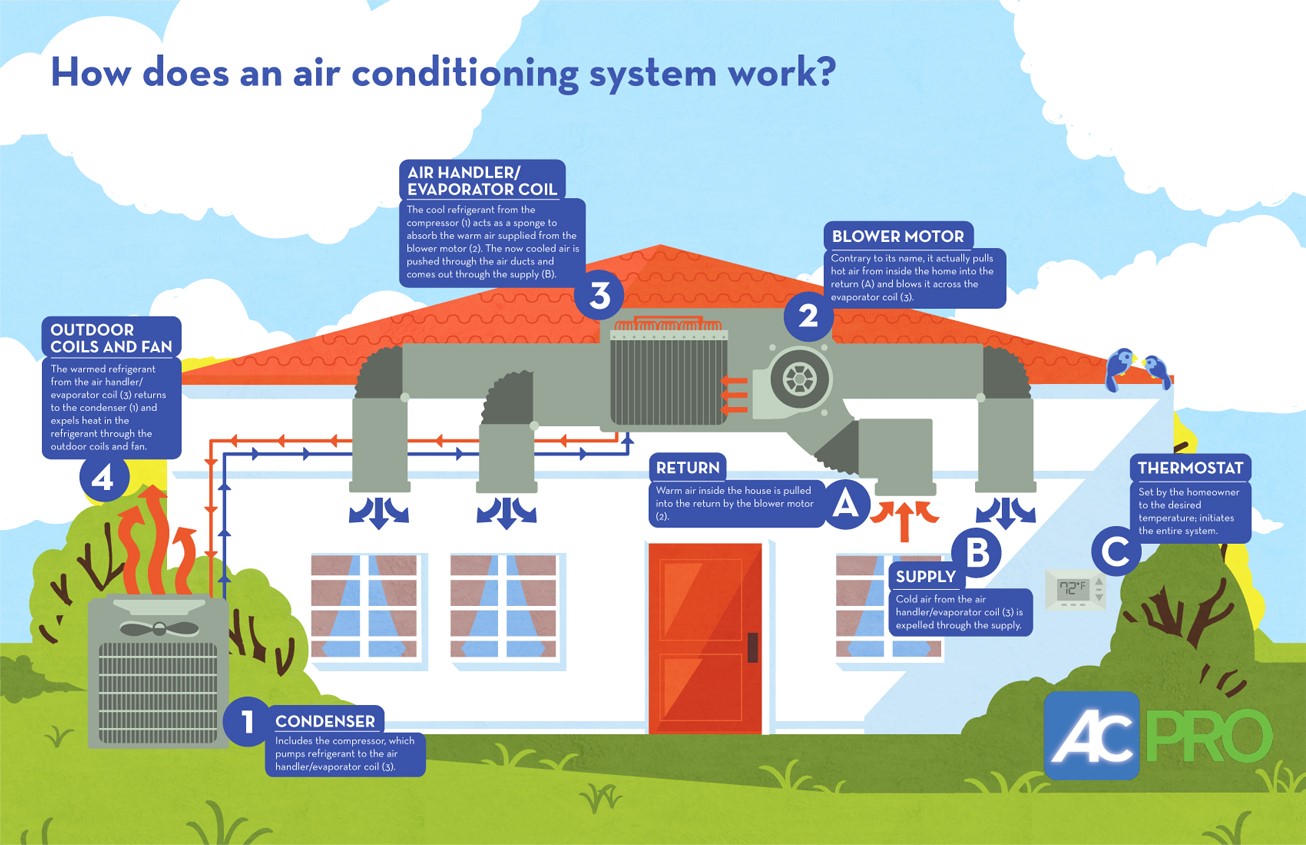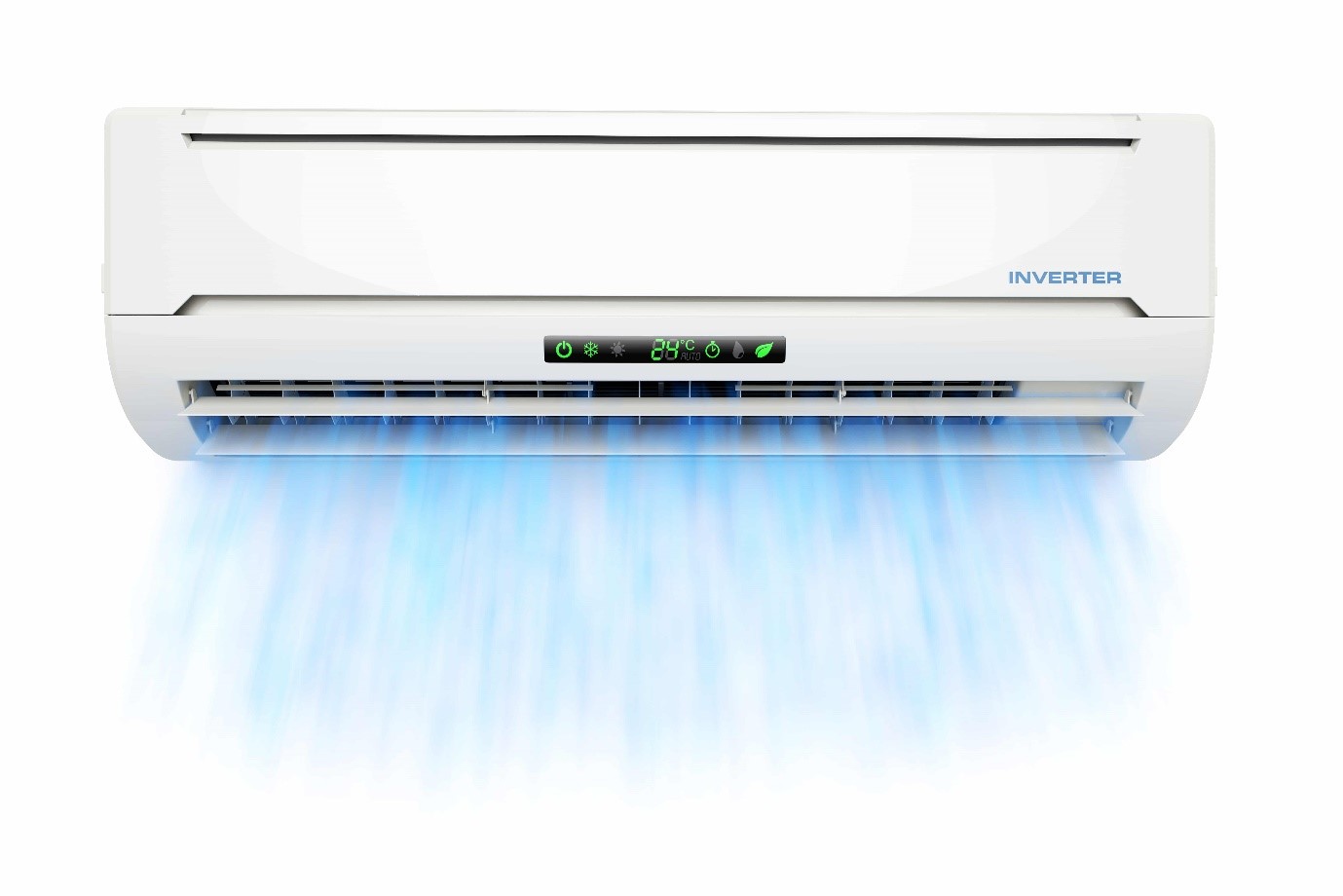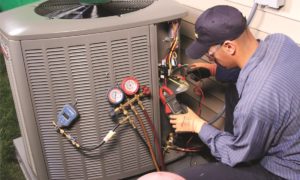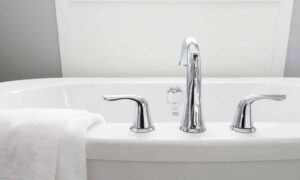Finding the right air conditioning installation company
As we all know, the process of removing heat from a confined space, be it a room or an entire building for your own comfort, is what’s referred to as air-conditioning or air con as some people call it. In simple terms, it pulls the heat energy out of a building and transfers it to the outside air resulting in a cooler inside.
It can be used in both commercial environments as well as domestic environments. More so in countries that have majority of their year clothed in sunshine or heat waves. Air-conditioning is not only used for cooling but also used to remove humidity from rooms (or dehumidify it).
Another way in which air-conditioning is used is in rooms that have devices that produce heat, for instance electronic devices like computer servers that are placed in specifically built server rooms in some companies or power amplifiers, in other scenarios it is also used to store and display various products of a delicate nature such as artwork.
A little bit of history
Attempts to control our indoor temperatures had already begun early in ancient Rome, the remarkable aqueduct system which circulated cool water through the walls of homes, was a popular idea amongst the rich and famous.
Even though famousleaders like the 3rd century emperor of Rome Elagabalus, built a mountain of snow in his garden next to his villa, that was delivered to him from the mountains themselves, to stay cool during the summer months, it wasn’t the most efficient idea.
Such ‘luxuries’ vanished during the Dark Ages, until in the 1800’s the Western world tried to tackle to situation by using their engineers in a well-funded innovation – they built fans and these became the coolant of choice. Although, hand fans were used in China as far back as 3,000 years ago, not to mention a Chinese inventor had built a first of its kind, room- sized rotary fan that was powered by hand, and which he was given credit for. Read more about this history here
Fast-forward to the ‘big-breakthrough’- electricity. Which made a lot of things possible including the creation of a motor by a man named Nikola Tesla. Which were used in oscillating fans in the early 20th century.
Then, in 1902, an engineer from New York named Willis Carrier, in his 20’s at the time, developed the first modern air-conditioning system, and the rest is history.

How does it work?
Find out in a detailed review on how air conditioners work. The methodology in a nut-shell of what goes behind it is, in the use of a compressor that condenses and circulates the cool air through the outdoor unit, it changes this from gas to liquid. The composites involved in this part of the process are known as ‘refrigerants’ and they have the ability to change its properties at relatively low temperatures. The indoor unit’s fan circulates the inside air to pass across the evaporator’s spaces or ‘fins (look like a mesh). These metal fins convert the warm or thermal air inside, with the air outside. Here it turns from liquid into vapor, and removes the heat from the surrounding area. As this heat is removed, the air is cooled down and sent back into the house. It’s a circulatory process which repeats itself; hot air out and cold air in. This process continues repeatedly until your room’s temperature reaches the adjustment that is programmed into your thermostat setting. For a detailed review on How air conditioners work
Do you get different options?
As a matter of fact, you do. There are several different options of which you should consult a professional air-conditioning installation company about, so they can give you the best advice. For a more in-depth source click here for more information: https://quickcool.ca/
So, if you are not sure, you can speak to a professional and they can do an assessment on the property to see which one works and will fit, the best.
There are many types:
- Central Air Conditioning: this is the most common type of air-conditioner. Which has been around for decades. It is one of the most efficient ones on the market and works quickly to cool bigger rooms. They can come in big sizes so planning is crucial before installation.
- Ductless, mini-split air conditioner: Similar to the one above, this cooling system has an outdoor compressor and individual indoor units, which are accommodating in cooling different room in your house or building. Because each one has an individual control of its own.
- Window air conditioner or ‘unitary unit’: this system also cools only one room at a time but is usually installed in the window of the room. They blow cool air in the room and warm air outside of the room and are a better option for small rooms or small houses as it’s not as efficient as the one for larger rooms.
- Portable air conditioner: these are similar to the window air conditioners; in that they cool one room at a time. However, these are much easier to install, they are adaptable and are a cheaper option as well.
- Hybrid air conditioners: the idea of Hybrid has become a popular concept over the past few decades and one that is a fuel efficient and reduced emissions heaven-sent. It’s no wonder the same technology has being used in air-conditioners throughout the world. Similar to Hybrid cars, this system shifts between 2 energy sources to make it easier to save on both energy and price.
Geothermal heating and cooling: as the name suggest, this cooling system is not only energy-efficient but also sustainable and has a longer life-span than most other air-conditioners. This system is cleverly designed to extract the air from the ground below us and transfer it to our homes. A ‘geo-thermal coil’ is installed deep underground and is efficient enough to not only cool, but also hat up your house. Interested in learning all about how geo-thermal works: www.trustcolliers.com














